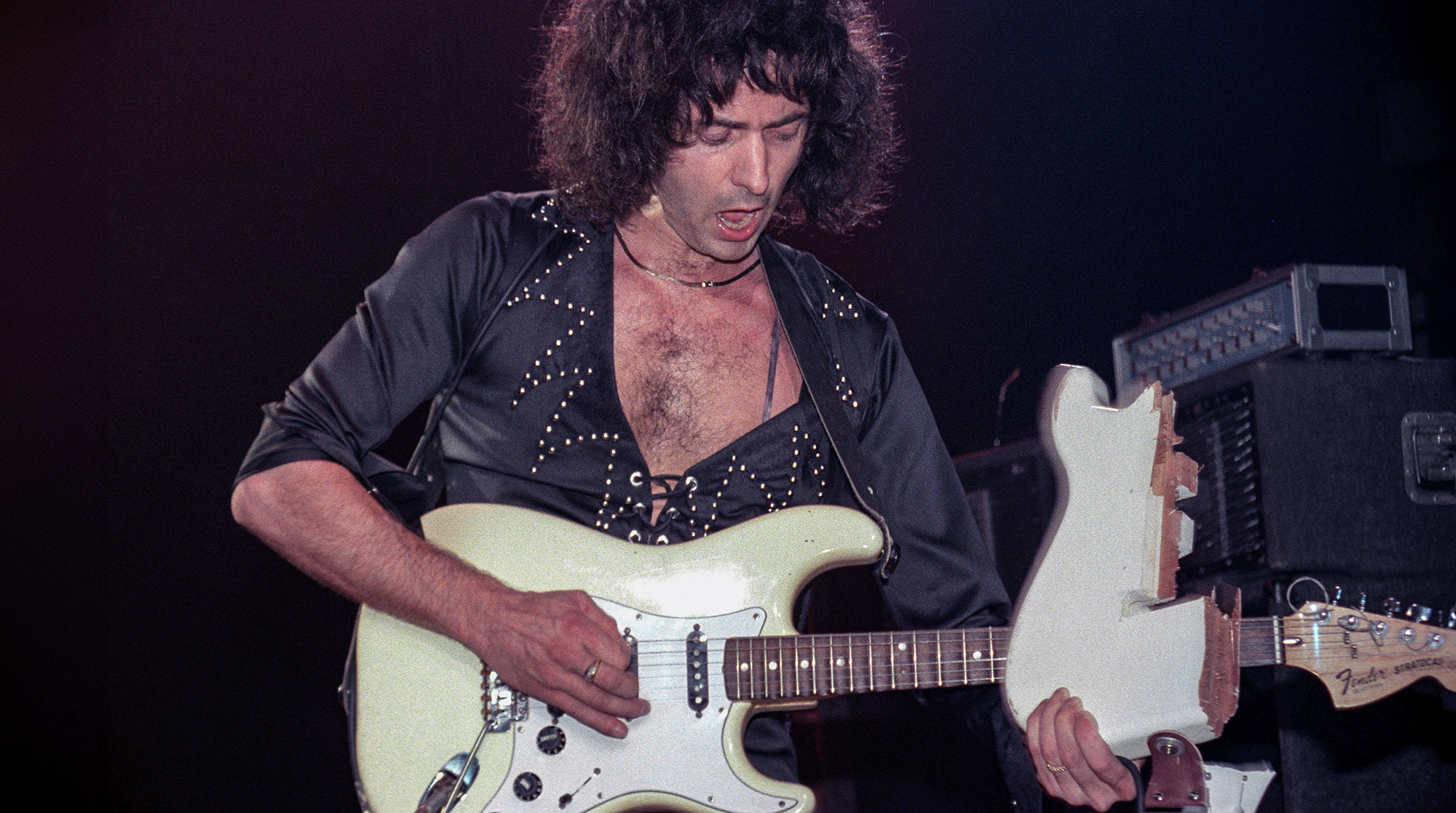Go Behind the Scenes of Fender's Parallel Universe Volume II Series
Embrace the weird as Fender's Joey Brasler walks us through the company's range of surreal hybrid electrics.
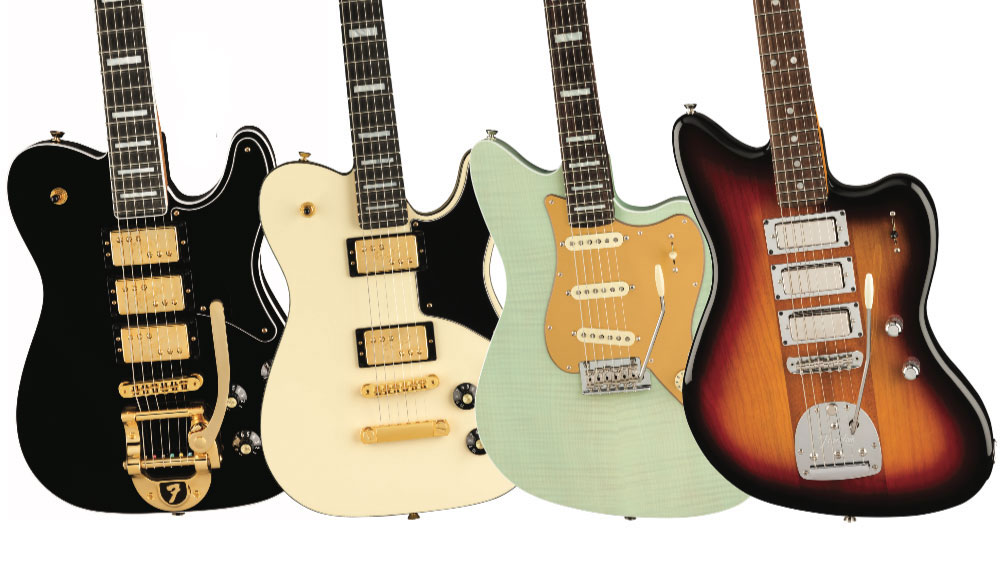
Fender guitarists have long been attracted to the idea of customizing and mixing-and-matching components to create something entirely their own.
The company celebrated this DIY aesthetic in 2018 when it launched its Parallel Universe collection. Fender wowed the crowds at that year’s winter NAMM show with an eye-popping assortment of guitars that were designed from the ground up to be off-the-wall hybrid pairings of classic models.
Presented in mirror-reflecting display cases that gave the presentation a kind of funhouse theme, the models included the enticingly named Strat Tele Hybrid, Jazz Tele, Jaguar Strat, ’51 Telecaster PJ Bass, Whiteguard Strat, Tele Thinline Super Deluxe, Troublemaker Tele and the retro-futuristic Meteora, the first guitar designed and built to test the Parallel Universe concept.
The Parallel Universe models proved to be a hit with Fender fans, and the limited numbers produced at Fender’s factory in Corona, California, sold out quickly as they were released throughout that year.
The Starcaster, Marauder and Custom didn’t make big headlines, but they signified a creative trend. In fact, it was a look back at these models that inspired the 2011 factory-modded Pawn Shop series
But Parallel Universe wasn’t about creating way-out wonders, as Fender had done in the past with guitars like the Marauder Type II, Swinger and Electric XII. So what sparked the idea of crosspollinating different models to create this new breed of high-end six-string hot rods?
“In late 2016, the Fender electric guitar product team started working on some of the concepts that would become Parallel Universe,” explains Joey Brasler, Fender’s vice president of product development.
“We all appreciated the rich history of modded Fender guitars, and we wanted to celebrate and continue that ethos with a run of luxury American-built, factory-modded dream guitars.
All the latest guitar news, interviews, lessons, reviews, deals and more, direct to your inbox!
“Some Fender models released from 1965 to 1975 — such as the Starcaster, Marauder and Custom — didn’t make big headlines, but they signified a creative trend. In fact, it was a look back at these models that inspired the 2011 factory-modded Pawn Shop series, all of which were twisted takes on what a Fender guitar could be.
“So in tribute to Fender’s history of ‘coloring outside the lines,’ we began exploring unique takes on familiar shapes, reimagining forgotten models and thinking up new concepts the world has never seen.”

Fender Parallel Universe II Troublemaker Telecaster Deluxe

Fender Parallel Universe II Troublemaker Telecaster Deluxe
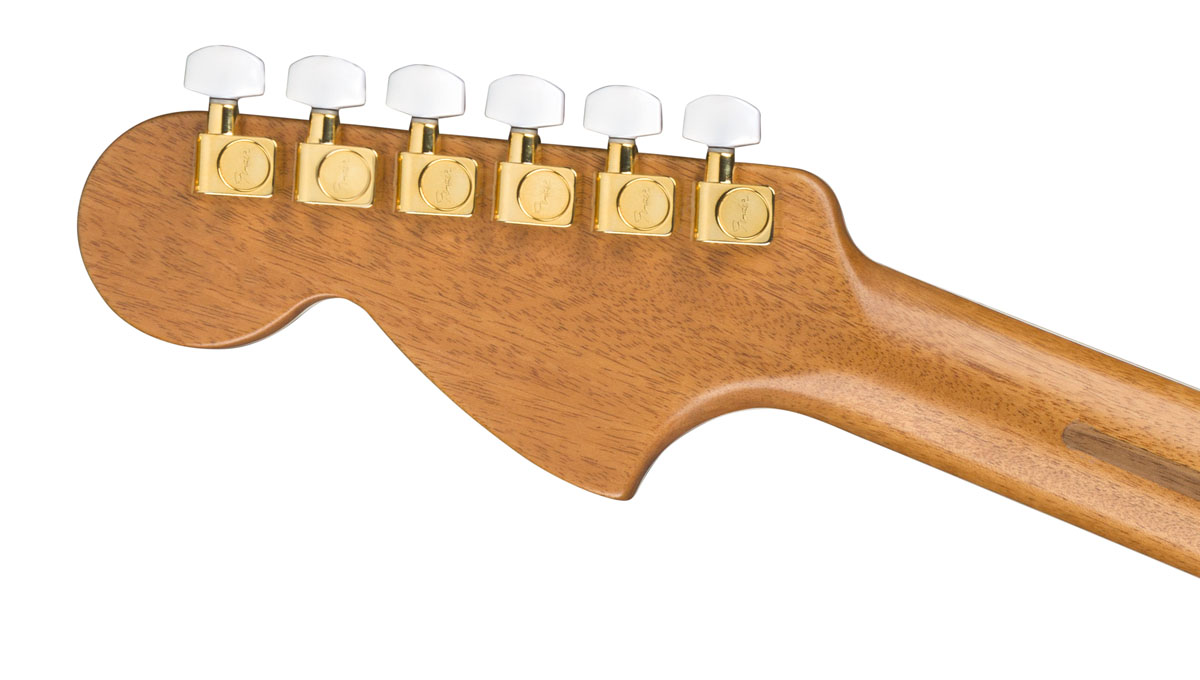
Fender Parallel Universe II Troublemaker Telecaster Deluxe
For 2019, Fender revamped the concept with the Alternate Reality series, essentially more-affordable Mexico-made hybrid guitars patterned on Parallel Universe, and the high-end series of Rarities anniversary and tribute guitars. But this year, Fender returned with the Parallel Universe Volume II collection.
The company kicked off the first of the eight-part series in April with the Jazz Strat ($2,299), a fusion of form and fantasy that combines a Stratocaster body with the neck, pickups and vibrato of a Jazzmaster. A bevy of other beauties is slated to be released throughout the year in unspecified order.
They include the Maverick Dorado ($2,499), Spark-OMatic Jazzmaster ($1,199), Tele Màgico ($2,499), Strat Jazz Deluxe ($2,299), Troublemaker Tele Deluxe and Troublemaker Tele Deluxe Bigsby ($2,399 and $2,499 respectively) and the Uptown Strat ($1,999).
In this exclusive interview, Brasler talks about the series and the new models planned for 2020.

Fender Parallel Universe II Jazz Strat

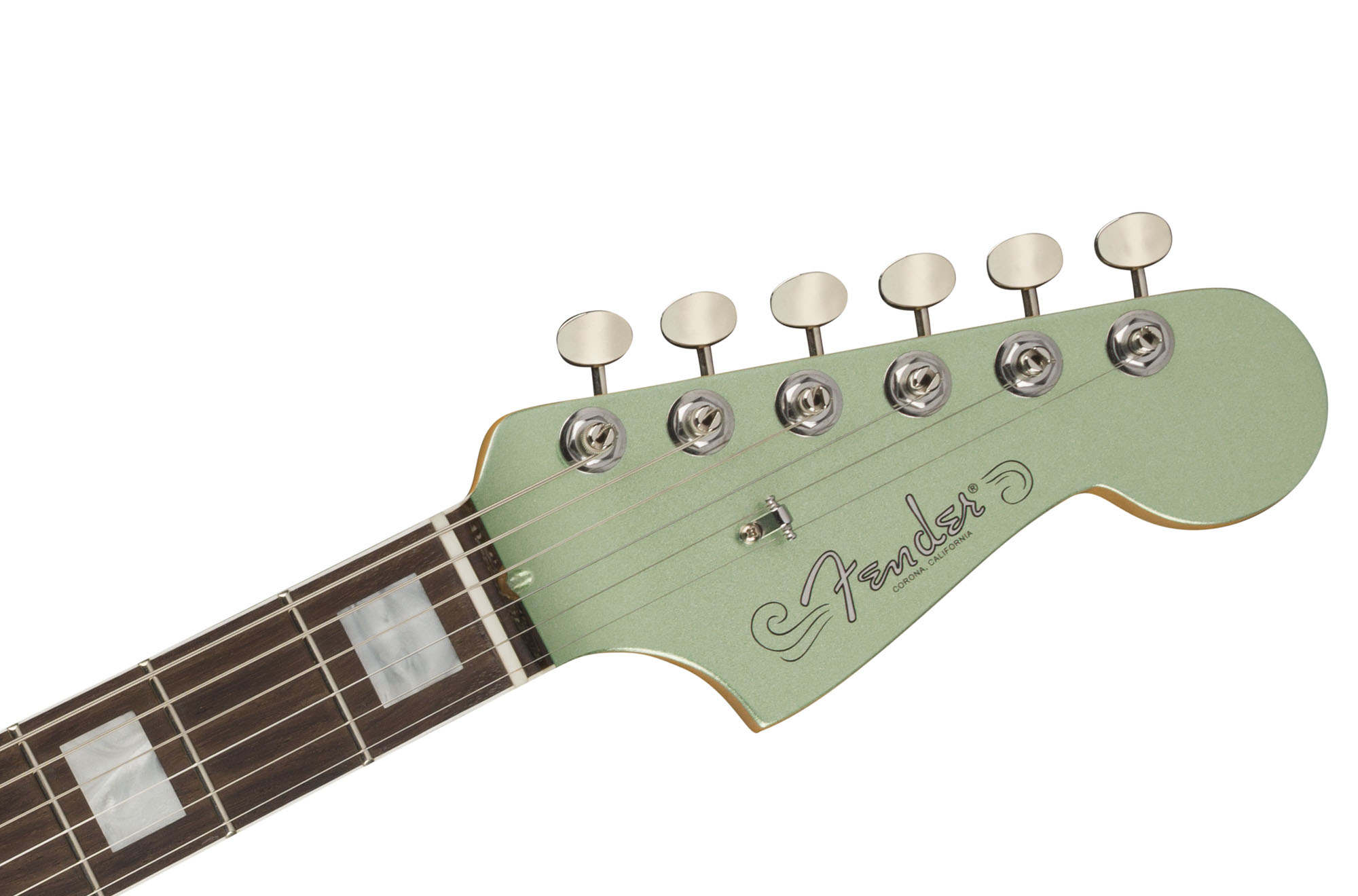
Fender Parallel Universe II Jazz Strat

Fender Parallel Universe II Jazz Strat
Was there always the expectation that a Parallel Universe Volume II would be developed after the initial run in 2018?
We hadn’t originally planned to do a Parallel Universe Volume II. Typically, each year’s big limited-edition series has a fresh theme with a completely unique set of instruments, such as the Exotic series, which used rare and rescued woods, and Rarities, which had stunning flame, quilt, koa and figured red mahogany tops with features like gold hardware and Custom Shop pickups.
But after the success of the original Parallel Universe, we decided to do a Volume 2 because we had a bunch of unique ideas for models we couldn’t fit into the first round.
We took the opportunity to reach back in time and transform the Maverick into something very elegant, create the Tele Màgico with Custom Shop master builder Ron Thorn, dream up the classy new Troublemaker models, plus develop some new colors and pickups. A good time was had by all!
In my opinion, the Maverick Dorado is the perfect Parallel Universe guitar. We wanted to do a super high-end version, so it’s finished in lacquer and it has block inlays and neck binding, a Bigsby vibrato and a tortoise-shell pickguard
Is that what led to the Alternate Reality in 2019, essentially creating some breathing time between launches?
We liked how the Parallel Universe guitars turned out so well that we created Alternate Reality for 2019, which was a whole different retro-future series at a lower price point.
Alternate Reality featured a completely different Meteora with two humbucking pickups, a great 12-string and the Sixty-Six, which was a six-string with a down-sized Jazz Bass body and a four-string tenor Tele with custom Tim Shaw pickups.

Fender Parallel Universe II Uptown Strat
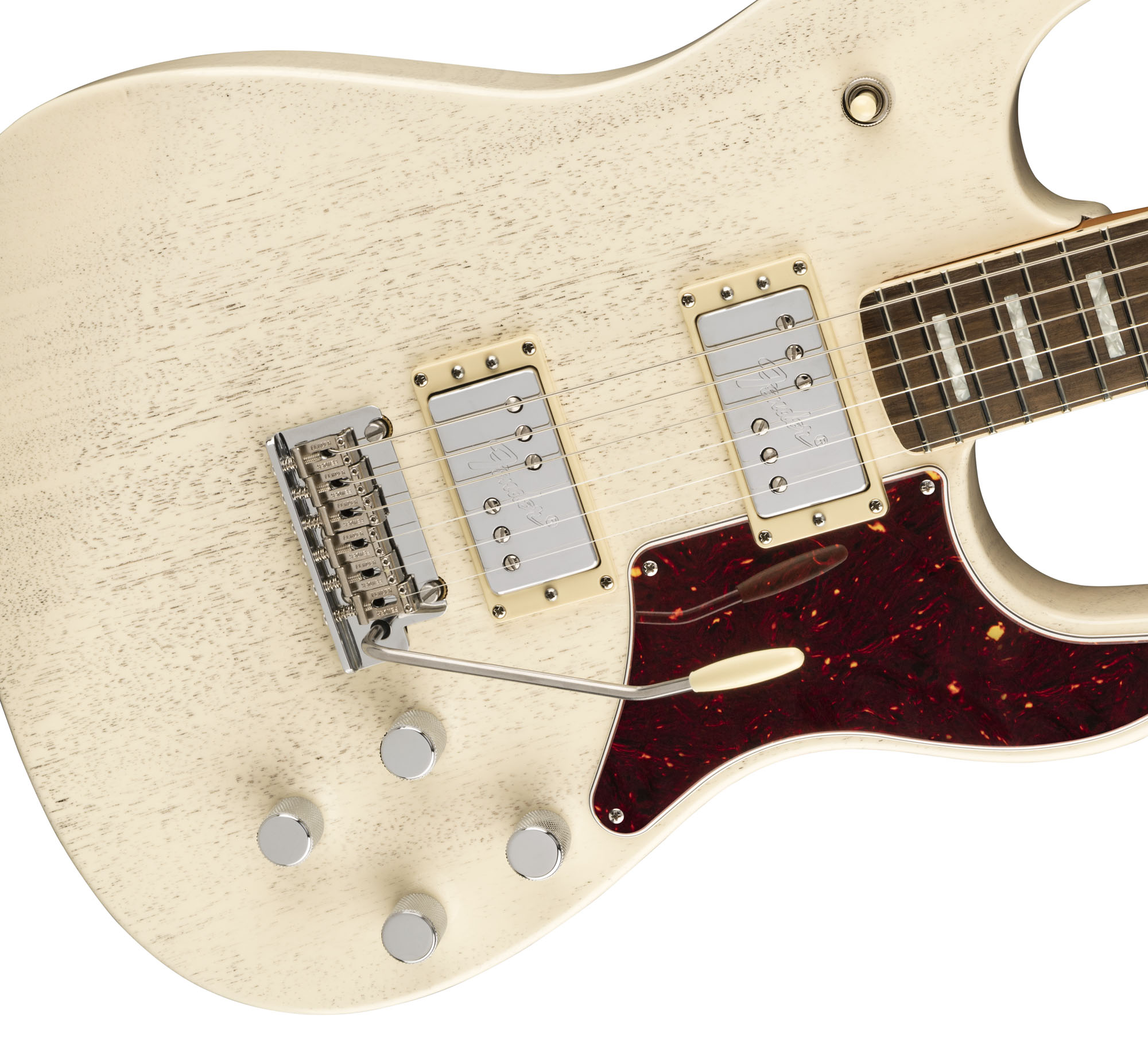
Fender Parallel Universe II Uptown Strat
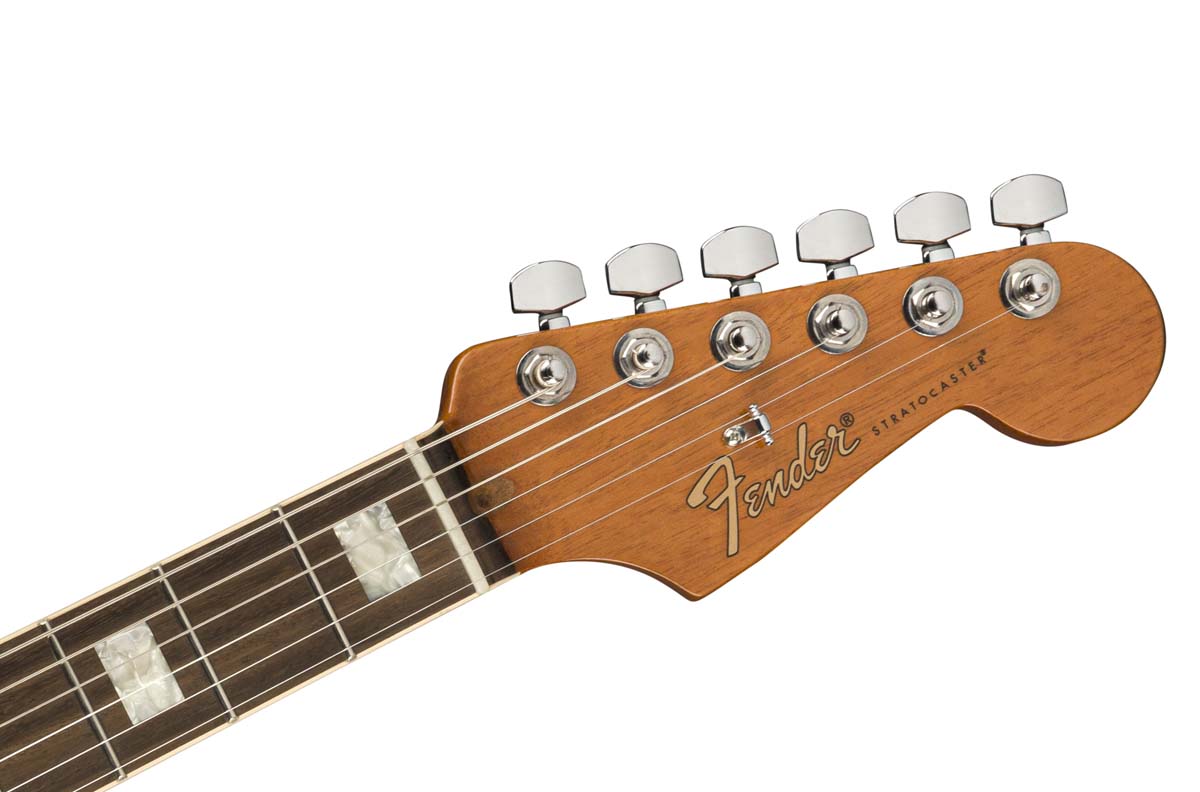
Fender Parallel Universe II Uptown Strat

Fender Parallel Universe II Uptown Strat
What was the first model chosen for the 2020 Collection?
The first prototype we built was the Maverick Dorado, which is a tribute to the 1969 Custom guitar that was put together for the express purpose of using up leftover 12-string necks, bodies and hardware. So it started out humble and we made it into something really stunning.
In my opinion, the Maverick Dorado is the perfect Parallel Universe guitar. We wanted to do a super high-end version, so it’s finished in lacquer and it has block inlays and neck binding, a Bigsby vibrato and a tortoise-shell pickguard.
We even created a new color for it: Mystic Pine Green. It has two custom Tim Shaw–designed humbucking pickups under Filter’Tron covers, and you’ll notice they have six screws and a bar that are gold. The only other place where that pickup was used was on a custom-designed three-pickup Jazzmaster we did for 2019, but they didn’t have gold screws or the gold bar.
It’s a collaborative process. The Product Development, R&D and Operations team members are all avid guitar players and enthusiasts
The Jazz Strat was the first model introduced in the 2020 Volume II series. Can you give us some insights into what the objectives were for it?
The objectives were to create an elegant Stratocaster with Jazzmaster features and a unique sound, so it has a Strat body with a Jazzmaster neck and headstock, vintage-style Jazzmaster pickups, an American Pro Jazzmaster vibrato and bridge, and custom radio knobs. It also has a new custom color — Mystic Surf Green — a custom DecoBoom pickguard, and we used nitrocellulose lacquer for tone as well the look.
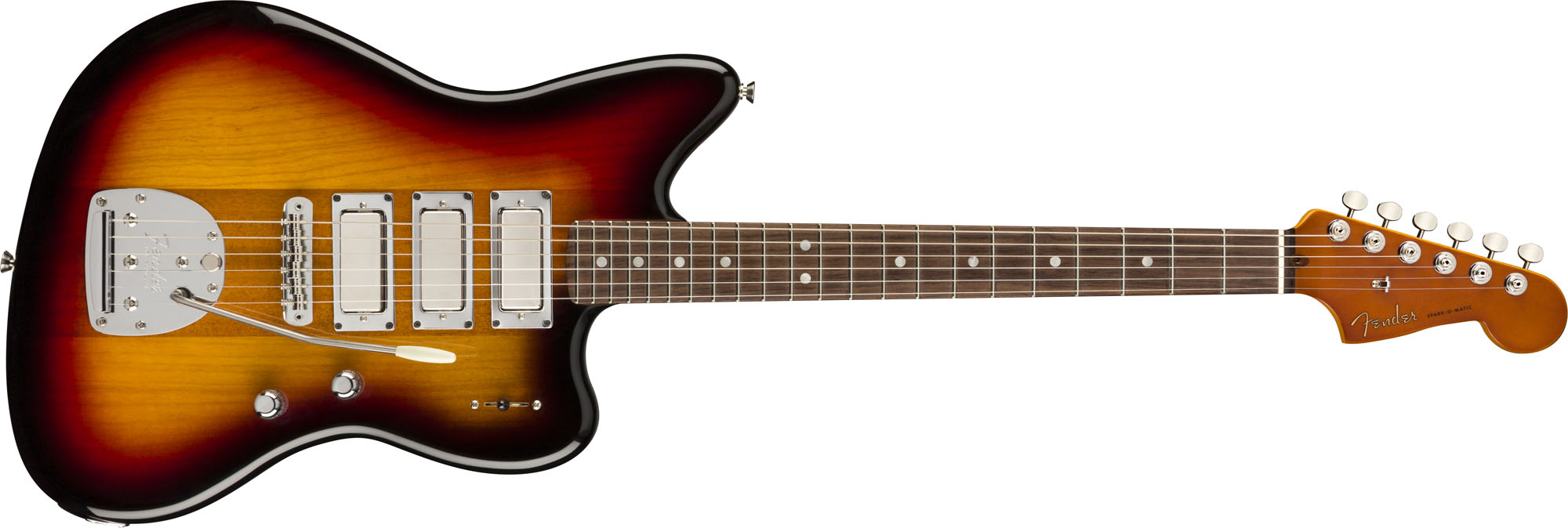
Fender Parallel Universe II Spark-O-Matic Jazzmaster
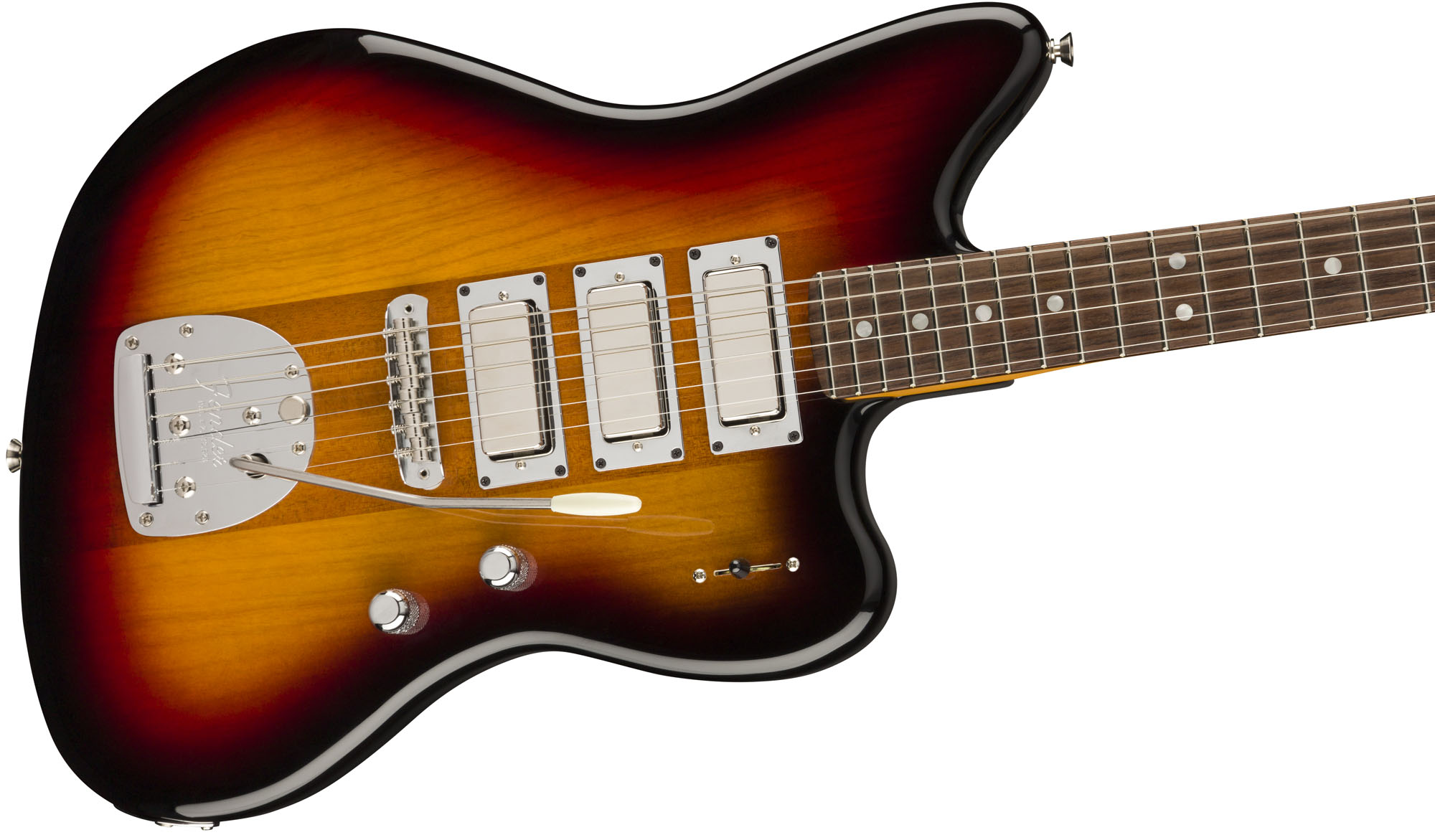
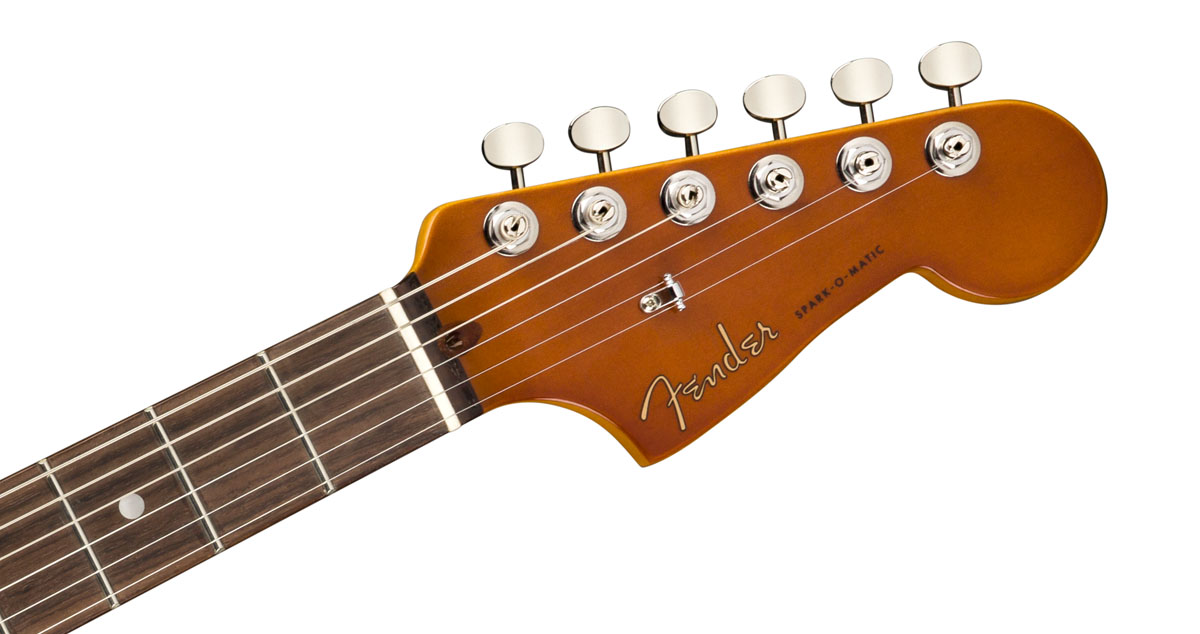
Fender Parallel Universe II Spark-O-Matic Jazzmaster.
How does the design process work, and how do you choose the components for each guitar?
It’s a collaborative process. The Product Development, R&D and Operations team members are all avid guitar players and enthusiasts. We dream up the initial concepts and design specs, including components, and then we render and prototype the guitars.
After that, we get together to go over all of the intricacies and details of the instrument. In these sessions, the guitars can change dramatically as we strive to make them as appealing and high quality as possible.
Once we approve the initial prototype of a guitar, we’ll build several in the factory to be sure the guitars will meet our quality standards throughout the manufacturing process. Specs can and do change during this process as we continue to refine the instrument.
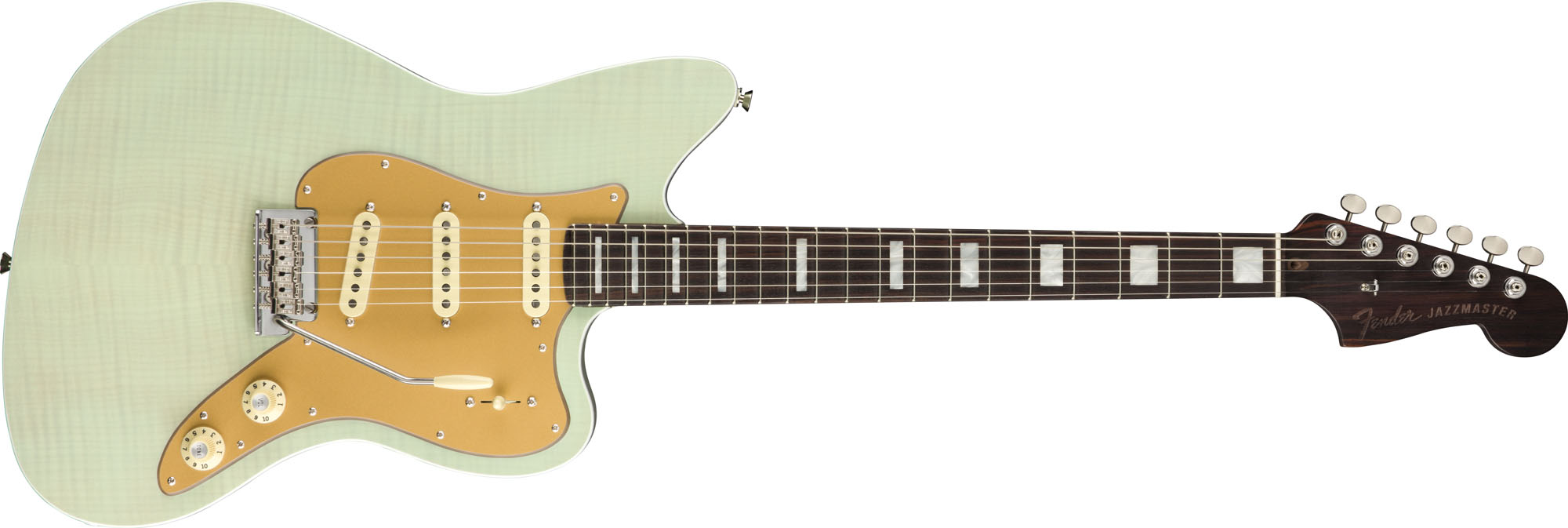
Fender Parallel Universe II Strat Jazz

Fender Parallel Universe II Strat Jazz
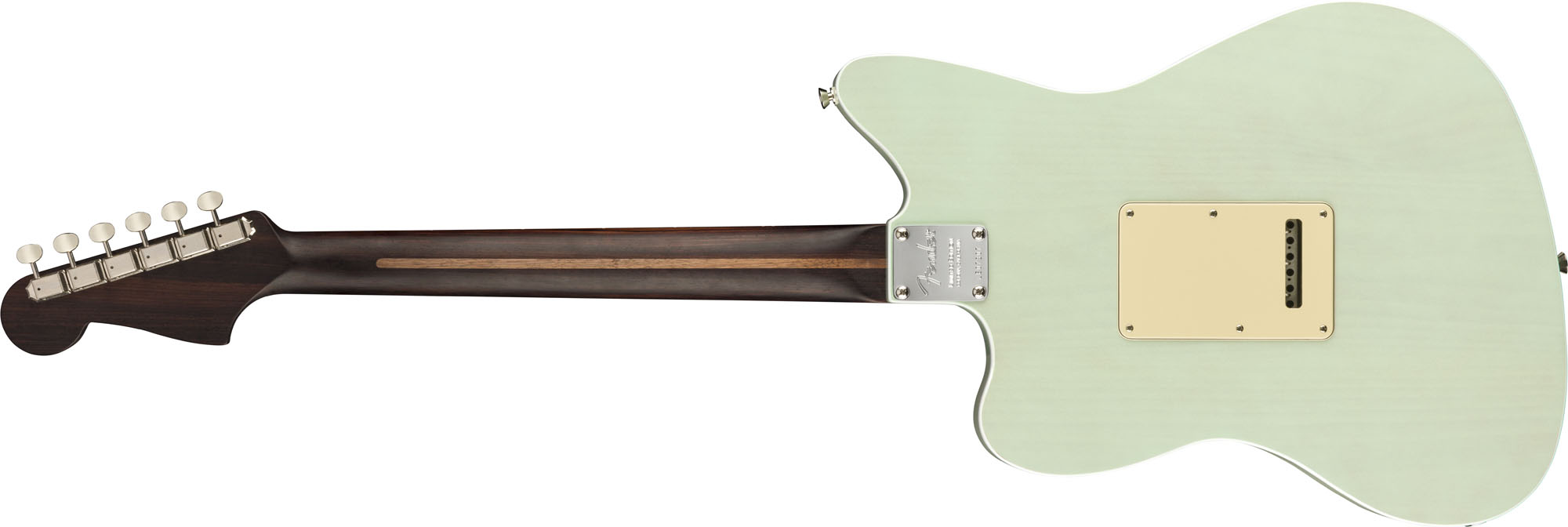
Fender Parallel Universe II Strat Jazz
I would imagine that the two very different takes on the Stratocaster — the Strat Jazz Deluxe and the Uptown Strat — would have posed some designer challenges. What was the thinking with those guitars?
Well, with the Strat Jazz Deluxe the idea was to create a unique Jazzmaster with a solid rosewood neck and an alder body with a flame-maple top, and then bring it into the Strat realm by combining it with Custom Shop Texas Special Strat pickups and an American Pro Strat trem.
On the other hand, the Uptown Strat was all about designing a dazzling guitar that sported dual PAF-style Double Tap humbuckers and individual volume and tone controls with push/pull Tele knobs to activate the DT technology [which provides improved single-coil tones in the split-coil mode].
We have some of the best pickup designers in the world, and we love bringing new voicings and tones into the universe
This guitar was intended to be a very different kind of Strat, so it has a mahogany body with a Static White “dog hair” lacquer finish and a ’60s C mahogany neck with a 24.75-inch rosewood fretboard.
With so many options for pickups, how do you decide what to use?
When we create the initial designs we also decide what the pickup configuration will be. The teams have spent countless hours playing every pickup on the face of the planet, and we love them all, know what they sound like and have our favorites.
Whatever configuration we decide on for a new guitar design, we’ll either choose the pickups that we’re sure will work, or we’ll come up with something completely new, such as the Gold-Foil pickups designed by Custom Shop master builder Ron Thorn.
We have some of the best pickup designers in the world, and we love bringing new voicings and tones into the universe.

Fender Parallel Universe II Maverick Dorado
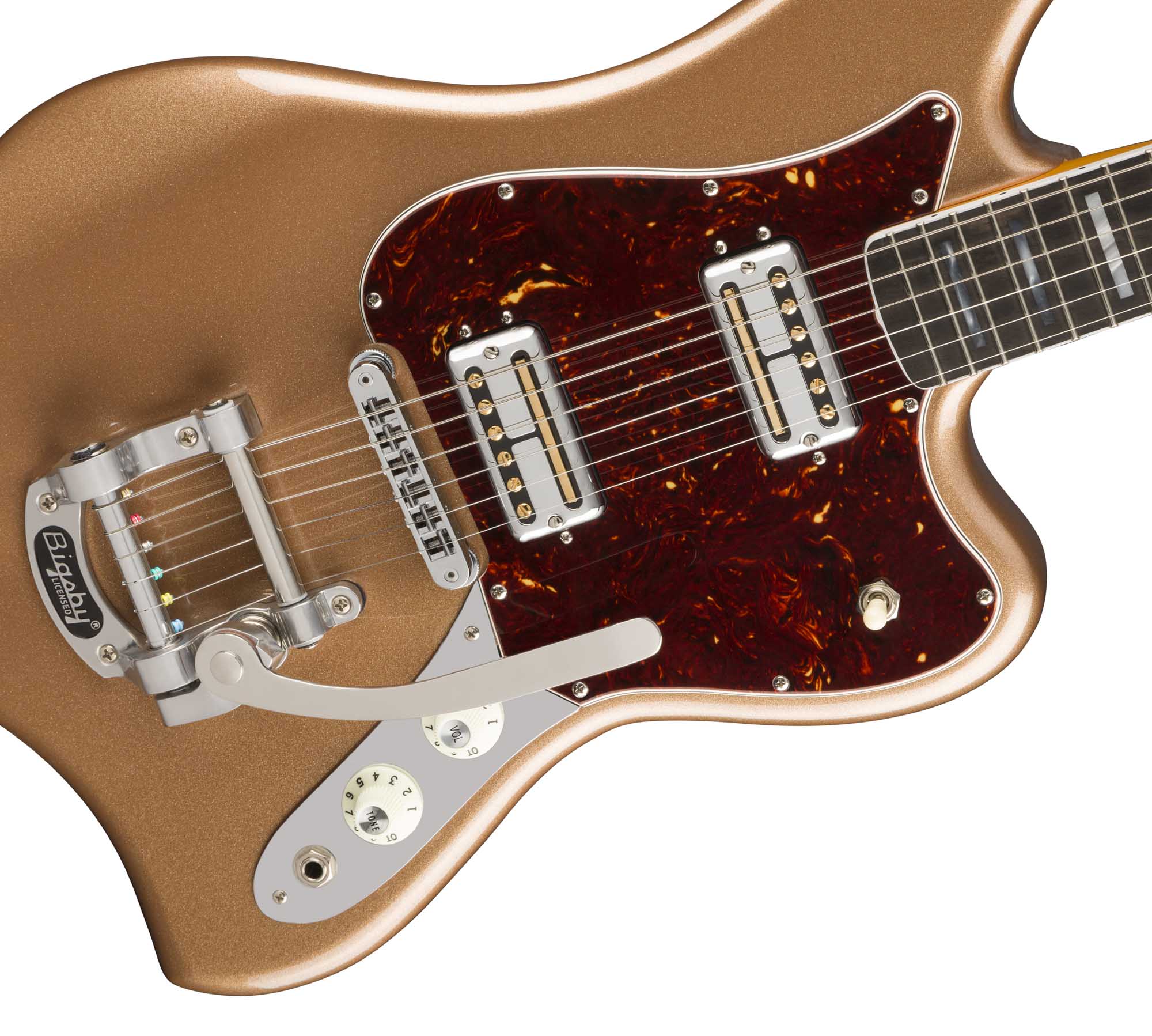
Fender Parallel Universe II Maverick Dorado
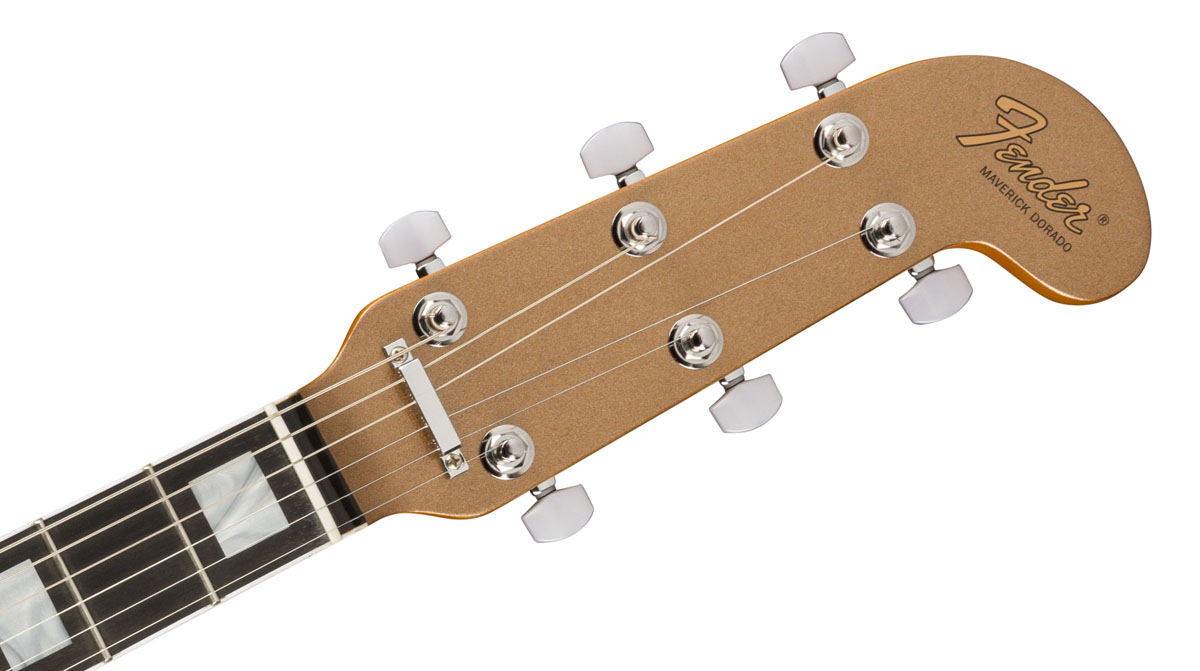
Fender Parallel Universe II Maverick Dorado
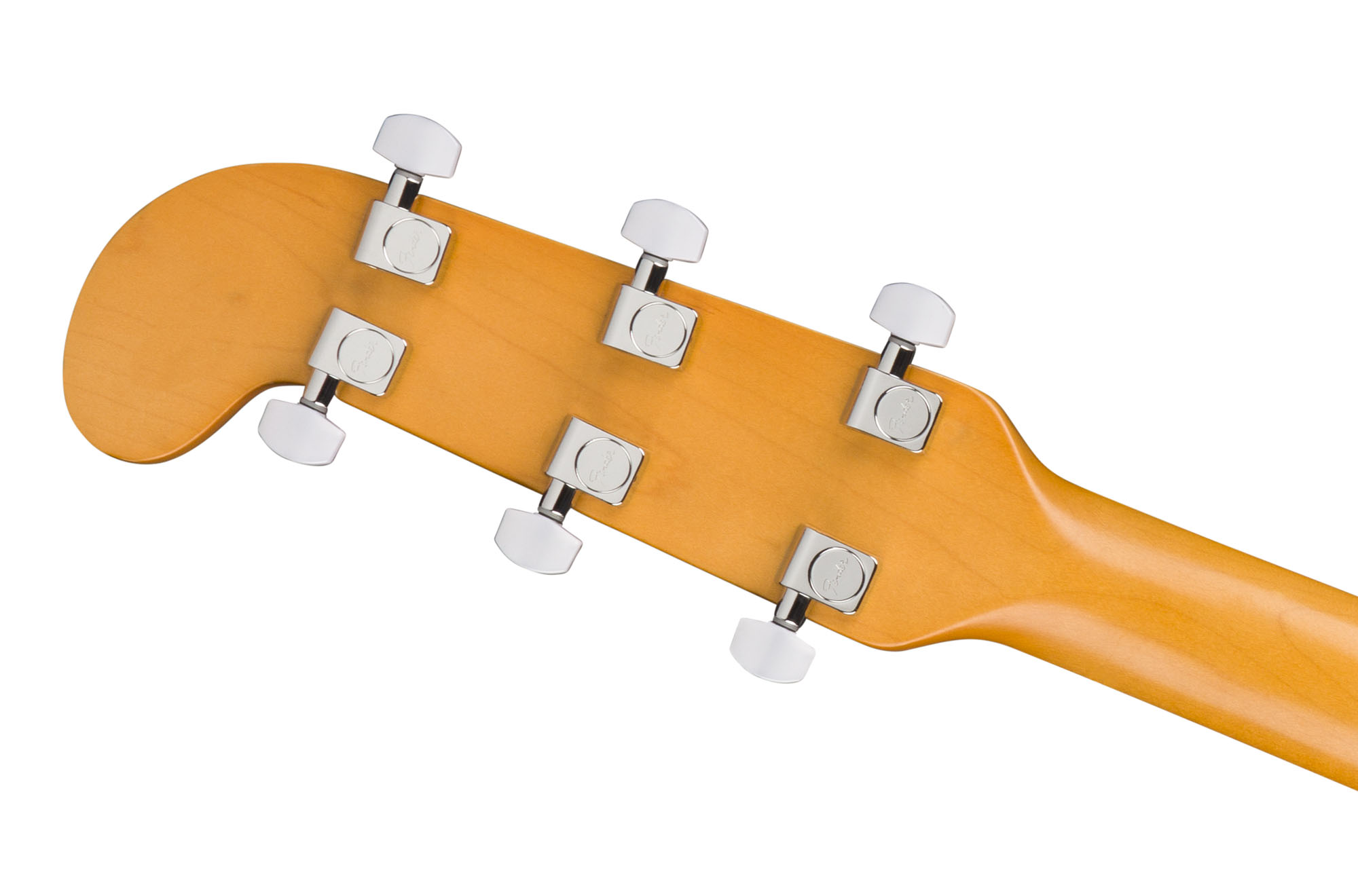
Fender Parallel Universe II Maverick Dorado
Did the Gold-Foil pickups find their way onto the Tele Màgico for certain tonal reasons?
This guitar resulted from a collaboration with Custom Shop master builder Ron Thorn. The Gold-Foil pickups were chosen because they sounded great with the guitar’s book-matched Thinline ash body and flamed-maple neck, which has a soft V-to-C shape.
Do you experiment with wood combinations until you find the right pairing that works with the pickups selected for a certain model?
Yes. For example with the Spark-O-Matic Jazzmaster the objective was an ultra-light guitar with an open sound, so we used a body comprised of solid Fijian mahogany in the center with chambered ash wings. That sounded great with the three-pickup configuration we chose using mini-humbuckers: two chrome-covered Seymour Duncan SM-1Ns and a SM-3B mini humbucker.
Neck shapes are driven by how we want the guitar to play and feel... It tells us what we need to do to make it sound better and be more responsive and fun to play
How are neck profiles developed?
Neck shapes are driven by how we want the guitar to play and feel in the hands of guitarists. The initial concept might suggest a thicker or thinner neck, and that gets refined after we build the initial prototypes. A guitar is a living thing. It tells us what we need to do to make it sound better and be more responsive and fun to play.
Who comes up with the color combinations and other visual elements?
Color ideas come from everywhere. The teams bring all sorts of ideas into the design process early on. Several new colors came to life during the development of both Parallel Universe runs, such as Trans-Daphne Blue and Trans-Surf Green, Mystic Pine Green, Static White and Faded Sea Foam Green.

Fender Parallel Universe II Troublemaker Tele Deluxe Bigsby
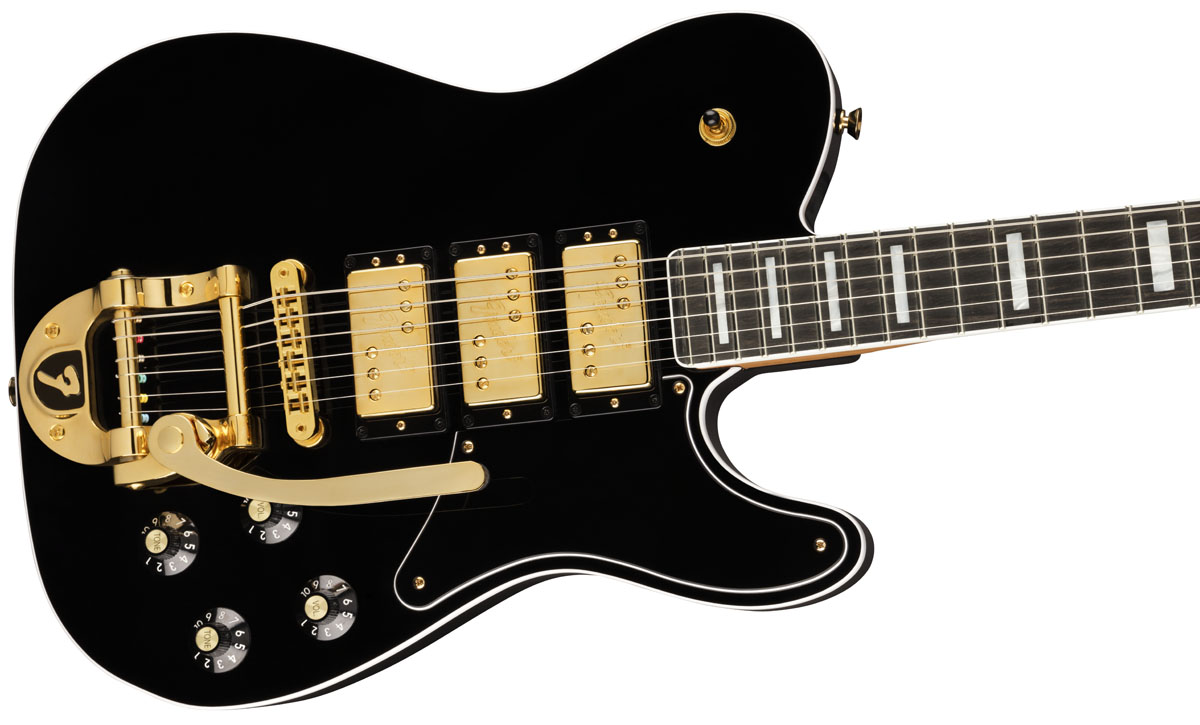
Fender Parallel Universe II Troublemaker Tele Deluxe Bigsby

Fender Parallel Universe II Troublemaker Tele Deluxe Bigsby
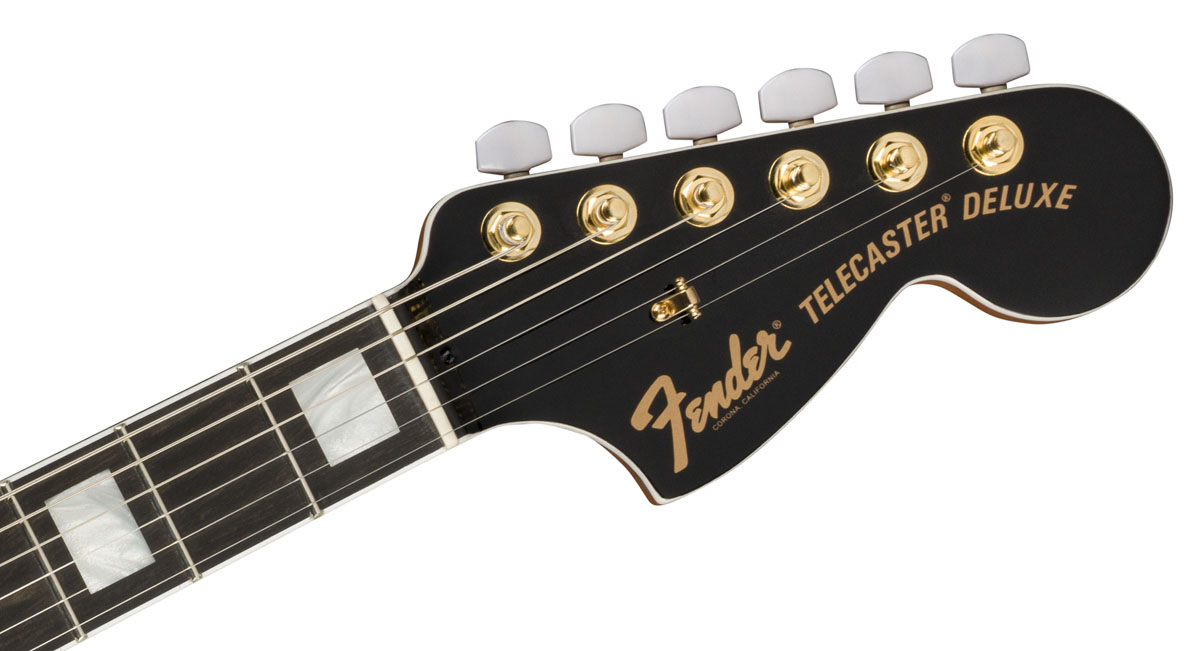
Fender Parallel Universe II Troublemaker Tele Deluxe Bigsby
What are some of your sonic goals, and how do you attain them?
They’re dreamed up during the initial design phase but can morph as the prototypes are built. When you’re building freshly designed guitars, sometimes what you thought they would sound like isn’t what you get.
That’s when we change neck shapes, hardware, pickups, fingerboards and even tuners in search of the best tone they can deliver. It’s lots of fun, but it gets serious as we develop the feel and tone of the guitars.
How did you arrive at the pickups used for Troublemaker Tele Deluxe and Tele Deluxe Bigsby?
Those guitars were developed because we wanted to create a pair of extra-bold Telecasters with a huge, yet sensitive response, and they needed to feel substantial in the hands and sound strong and dynamic.
The newly designed custom-wound Double Tap humbuckers — two in the Deluxe and three in the Deluxe Bigsby — sounded great along with the special electronics and push-push pots.
Once we achieved what we were aiming for sonically, we added gold hardware, neck and body binding, and pearl blocks on the fretboard to give them an elegant look.

Fender Parallel Universe II Tele Màgico

Fender Parallel Universe II Tele Màgico
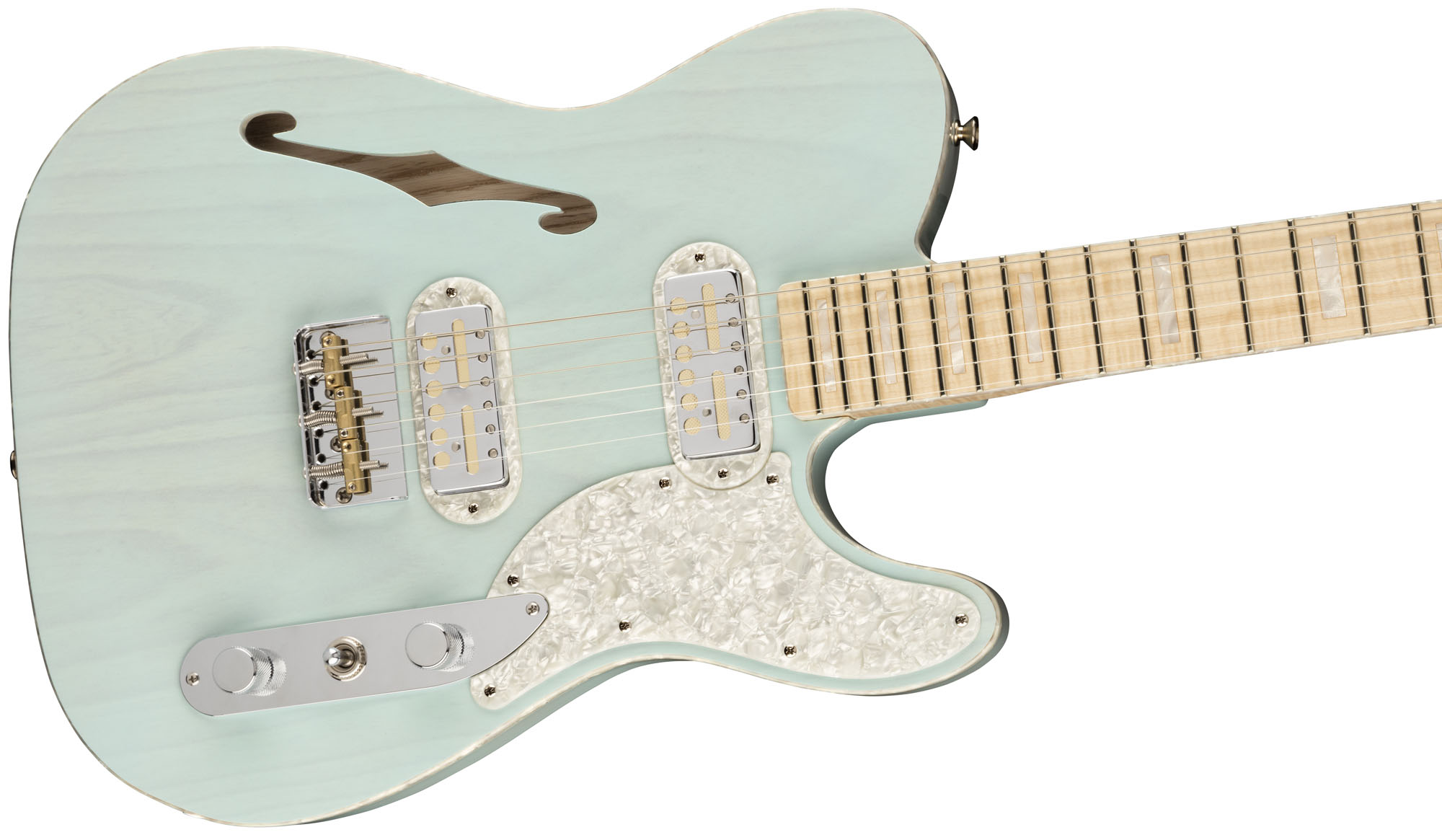
Fender Parallel Universe II Tele Màgico
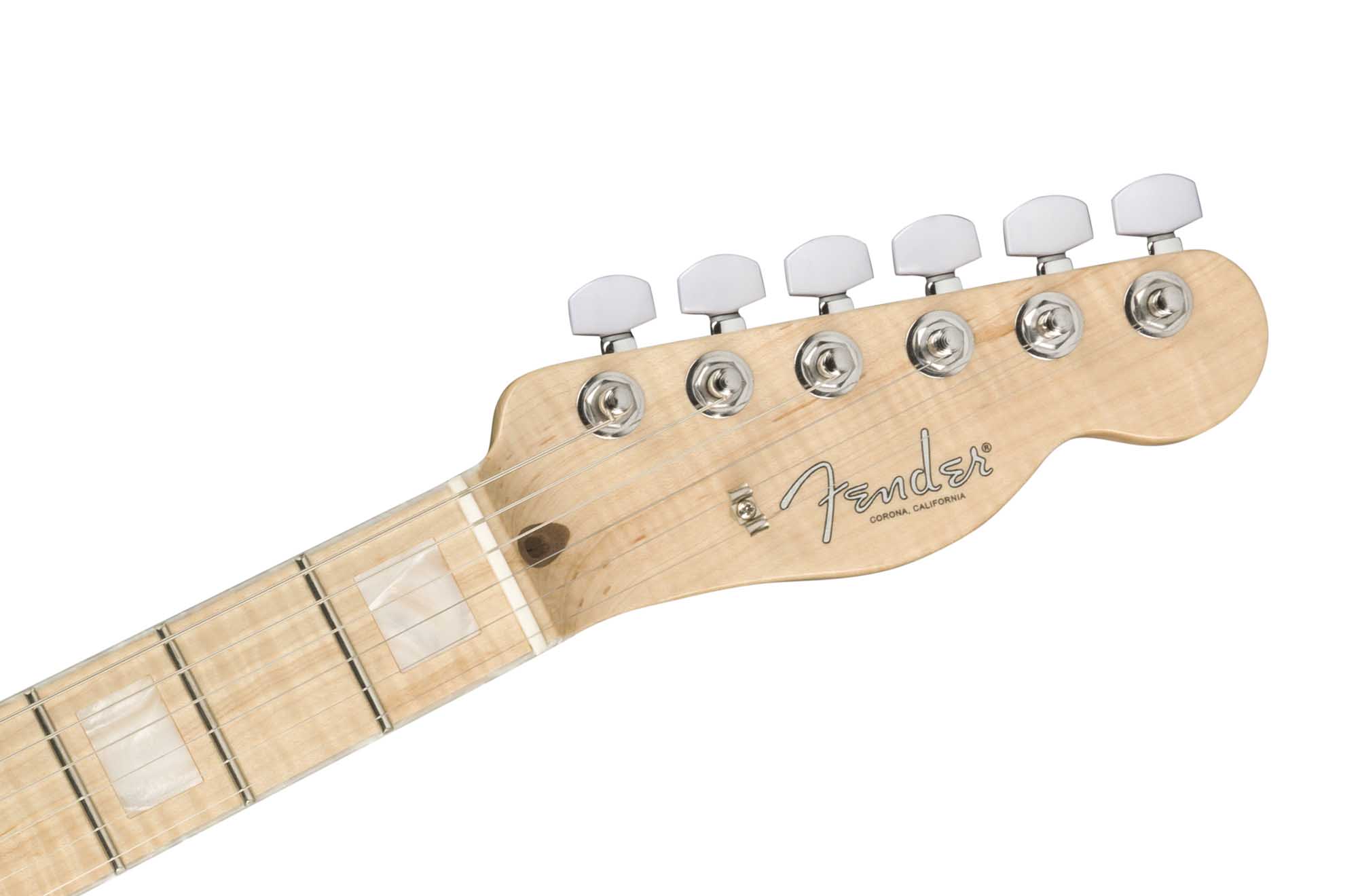
Fender Parallel Universe II Tele Màgico
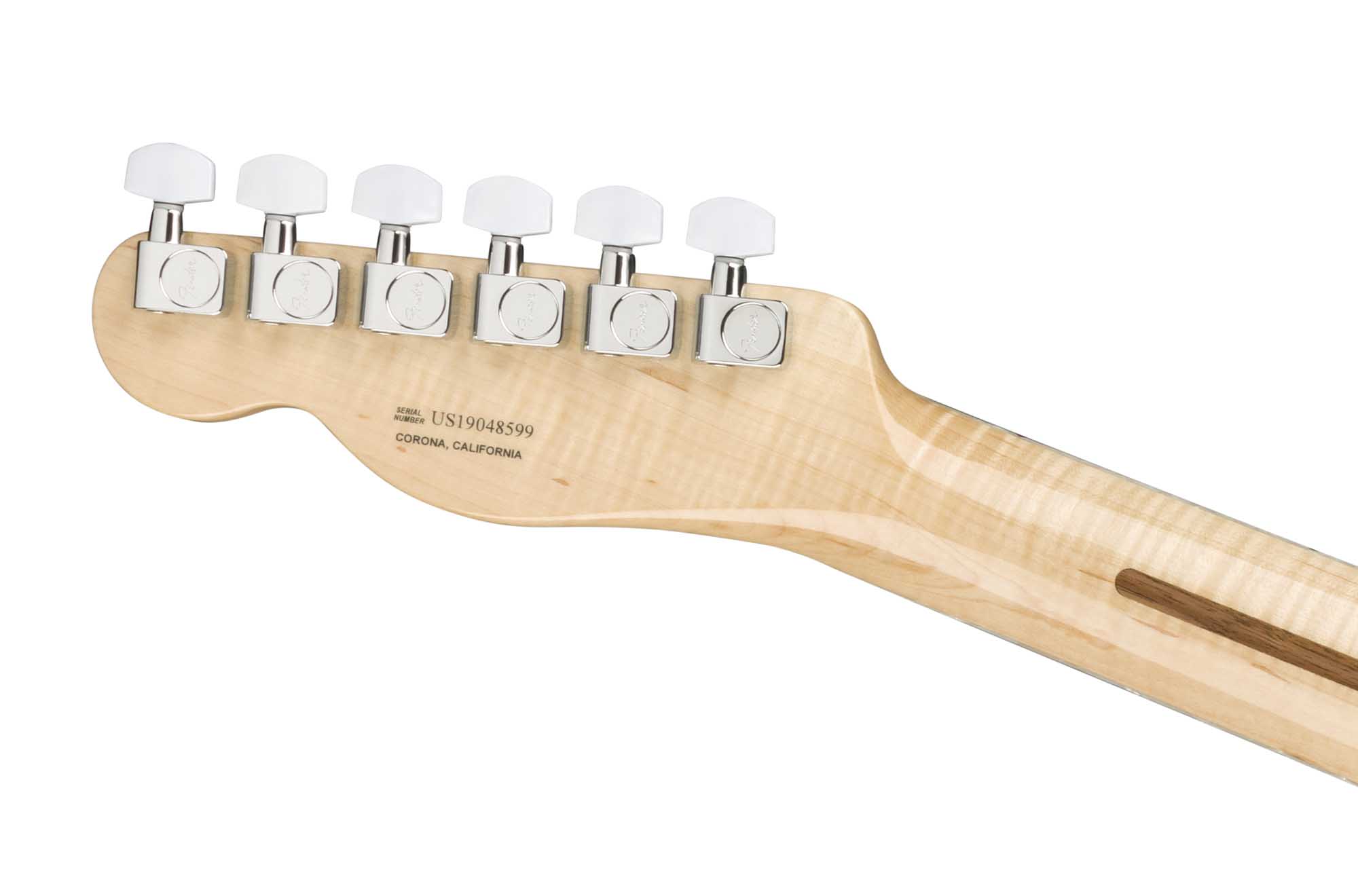
Fender Parallel Universe II Tele Màgico
How are these guitars tested?
At all phases of a guitar’s development, we personally test and listen to everything about the instrument — how it plays, sounds, looks and feels, and even how easy is it to string and set up. The guitars are also put through rigorous quality and engineering inspections along the way to ensure everything is being manufactured exactly as intended.
Are you considering a Parallel Universe Volume III?
There’s no Volume III on the road map at this time, but there are otherworldly surprises coming.

Art Thompson is Senior Editor of Guitar Player magazine. He has authored stories with numerous guitar greats including B.B. King, Prince and Scotty Moore and interviewed gear innovators such as Paul Reed Smith, Randall Smith and Gary Kramer. He also wrote the first book on vintage effects pedals, Stompbox. Art's busy performance schedule with three stylistically diverse groups provides ample opportunity to test-drive new guitars, amps and effects, many of which are featured in the pages of GP.
